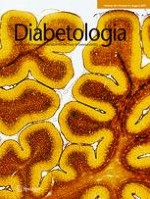Published in:

01-08-2007 | Article
The c-Jun N-terminal kinase JNK participates in cytokine- and isolation stress-induced rat pancreatic islet apoptosis
Authors:
S. Abdelli, A. Abderrahmani, B. J. Hering, J. S. Beckmann, C. Bonny
Published in:
Diabetologia
|
Issue 8/2007
Login to get access
Abstract
Aims/hypothesis
The protocols used for the preparation of human pancreatic islets immediately induce a sustained and massive activation of the c-Jun-N-terminal kinase (JNK). JNK, which participates in apoptosis of insulin-secreting cells, is activated by mechanical stresses, as well as by exposure to pro-inflammatory cytokines. Here, we investigated whether the delivery of a protease-resistant JNK inhibitory peptide (D-JNKI) through a protein transduction system during pancreatic digestion might impair JNK signalling throughout the transplantation procedure.
Methods
Rat pancreases were treated with D-JNKI through the pancreatic duct and cells then isolated by enzymatic digestion. Protein extracts were prepared to determine JNK activity by kinase assays and total RNA was extracted to measure gene expressions by a Light-Cycler technique. Cell apoptosis rate was determined by terminal deoxynucleotidyl transferase dUTP nick end labelling (TUNEL) assay and by scoring cells displaying pycnotic nuclei.
Results
Our data establish that the peptide transduction system used here efficiently transfects islets, allowing for stable in vivo (up to 2 days) transfection of human islets transplanted under the kidney capsule. Further, D-JNKI decreases intracellular JNK signalling during isolation and following cytokine exposure in both human and rat islets, as measured by kinase assays and reduced c-fos expression; D-JNKI also confers protection against apoptosis induced during the rat islet preparation and subsequent to IL-1β exposure.
Conclusions/interpretation
JNK signalling participates in islet isolation- and IL-1β-induced apoptosis in rat islets. Furthermore, the system we used might be more generally applicable for the persistent blockage (several days) of pro-apoptotic pathways in the transplanted islets; this days-long protection might potentially be an absolute prerequisite to help transplanted islets better survive the first wave of the non-specific inflammatory attack.